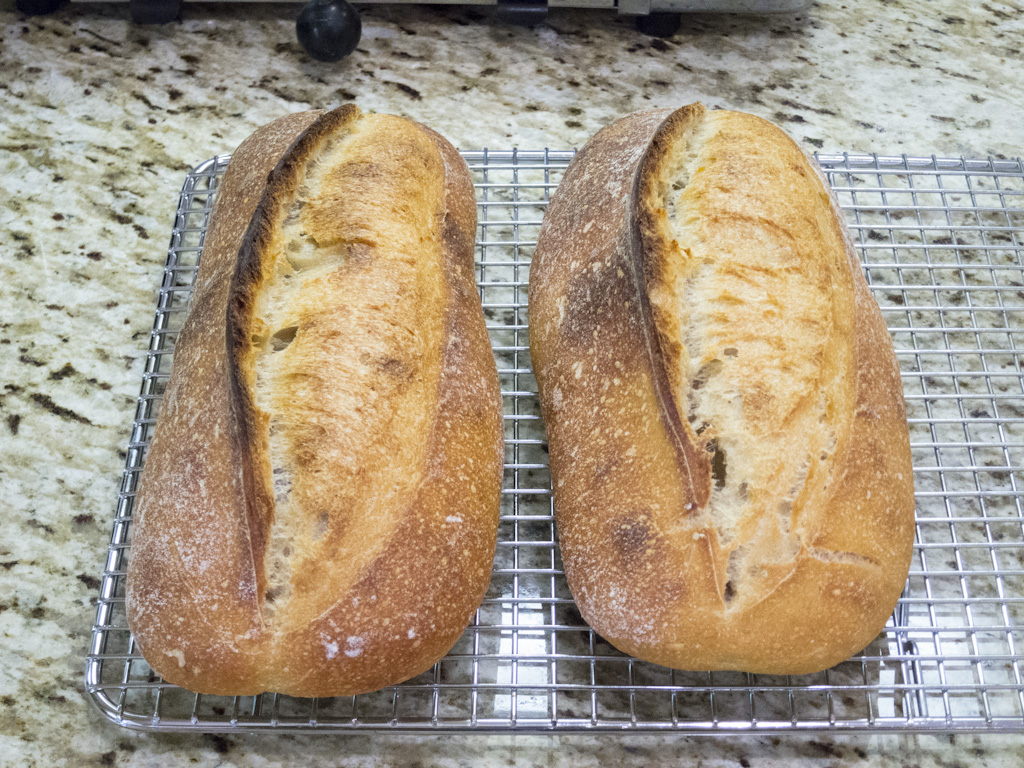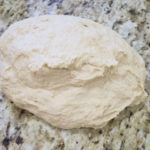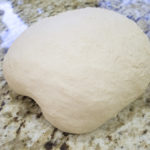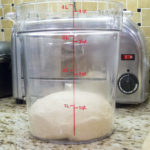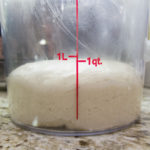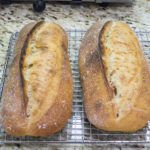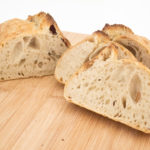Loaf 48 – Reinhart Style Sourdough
Now that I have new sourdough starter (posted after this) to work with, it’s time to bake some bread with it. My attempts with the SFBI sourdough recipe have gotten progressively better, with my most recent try (Loaf 41) being good enough that I’d let someone else taste it. I wasn’t completely pleased with the crumb and flavor, though, so I’m hoping the new starter will have a taste better and affect the crumb in a positive way.
The difficulty of the SFBI recipe is that it takes most of a day to make. For this loaf I tried a variation on the Tartine recipe using Reinhart’s overnight-in-the-fridge proofing style. In parallel, I made an SFBI recipe loaf (Load 49) so that I could compare them side by side. The recipe is below. I used 90/10 white vs. wheat flour, which is what the Tartine recipe does. Adding in the flour and water from the starter, final hydration works out to 70%. I should have added a bit more salt to account for the flour in the starter.
| % | grams | |
| White flour | 90% | 476 |
| Wheat flour | 10% | 53 |
| Water | 67% | 354 |
| Starter | 20% | 106 |
| Salt | 2% | 11 |
| Total | 1000 |
The ingredients were mixed, then I did two stretch and folds over 20 minutes. I let it rest at room temperature (70°) for two hours and then put it in the fridge overnight. The dough did very little rising during this time.
The next morning I took it out of the fridge and let it rest for another two hours. I shaped it into two batards and let them proof for another 2 1/2 hours. I then baked for 30 minutes with steam for the first 20 minutes.
Results
The loaves came about beautiful, but the crumb was not. It had very large holes surrounded by much denser dough. It was too chewy, though the flavor was fine.
Lessons
- Compare this with Loaf 49. The overnight session didn’t really save a significant amount of time then next day. The dough still needed to go through a long rest and proofing period.
- I’m not going to try this again. The SFBI approach works better.
- See notes on next loaf about wheat and about shaping – these both need to change.
- Proofed and scored
- Beautiful right out of the oven
- Disappointing crumb

